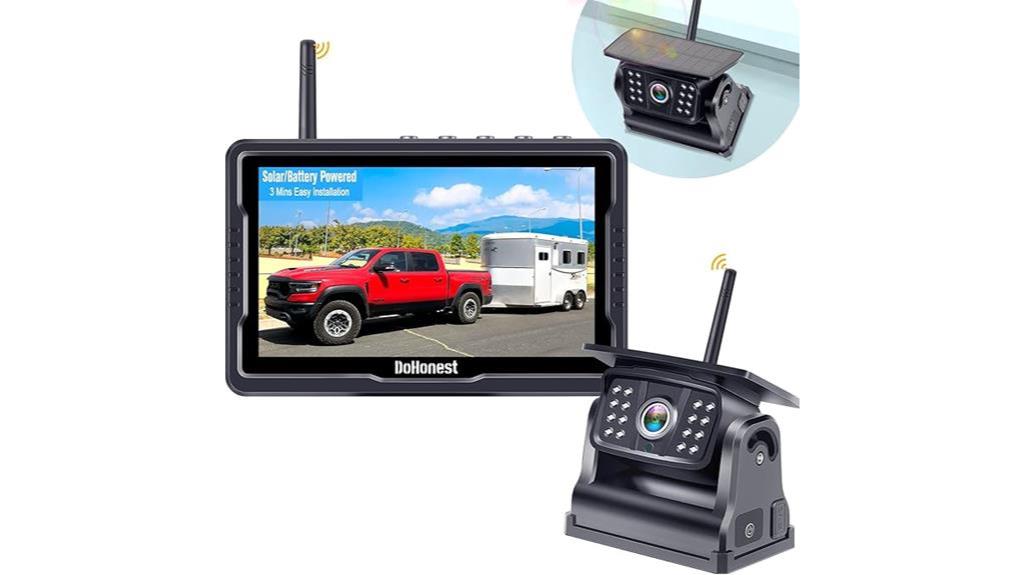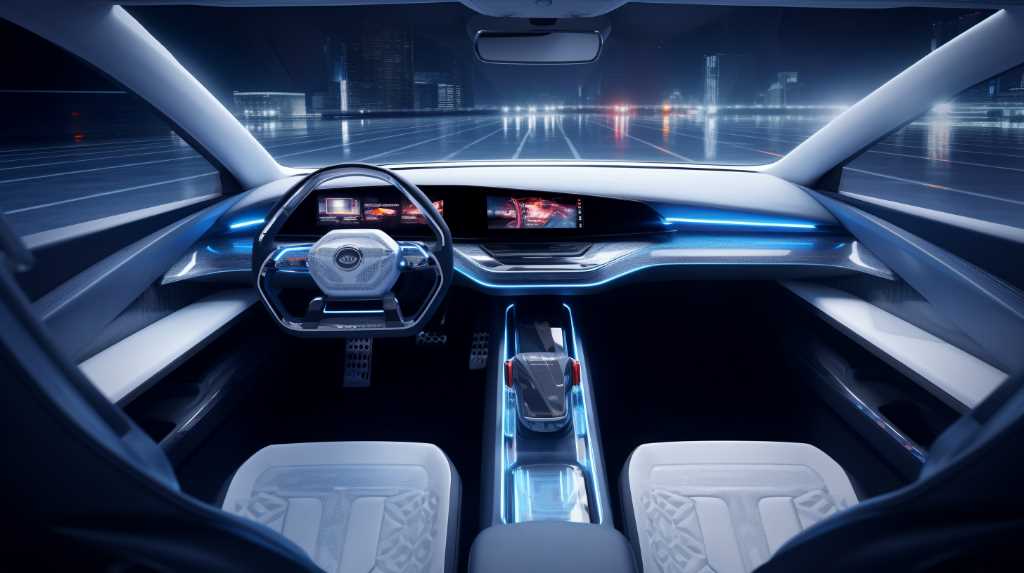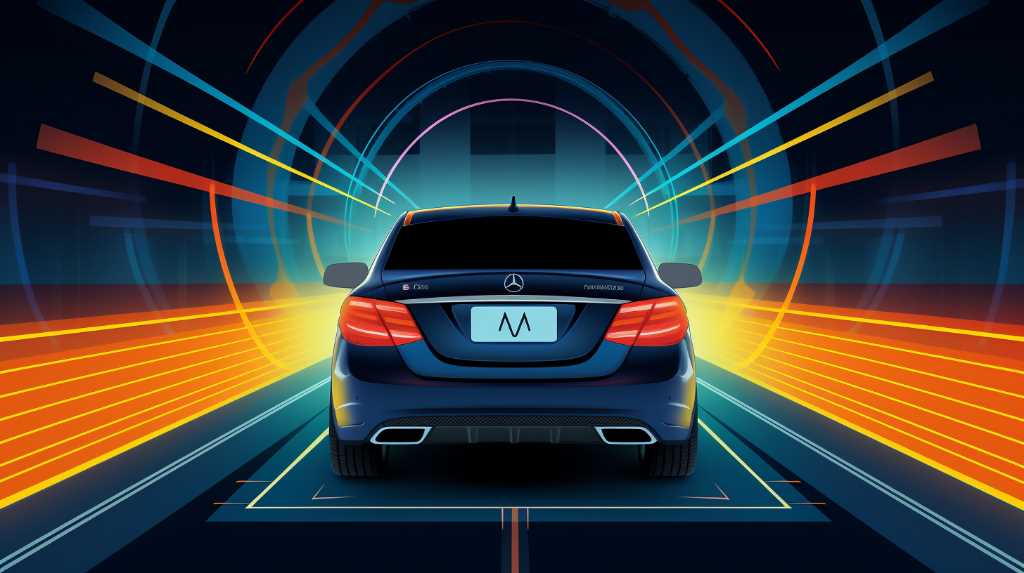Imagine the dark veil of night lifting as you reverse your car, the unseen becoming clear on a luminous screen. With a night vision backup camera, you can navigate the blind spots of darkness that traditional mirrors can’t expose. By reading this guide, you’ll learn how this technology not only enhances visibility but also significantly boosts your safety. You’ll get straightforward instructions on installation and valuable tips on maintaining your camera for optimum performance. We’ll help you integrate this tool seamlessly with your existing systems, outline strategies to prevent accidents, and assist you in selecting the right camera to match your needs. Empower yourself to take on the night with confidence, knowing that you have an extra set of eyes where you need them most.
Key Takeaways
- Night vision backup cameras significantly reduce blind spots and prevent accidents during nighttime reversing maneuvers.
- They enhance visibility in low-light conditions where traditional mirrors are less effective.
- Night vision backup cameras are now a federal requirement for all new cars sold in the United States.
- Night vision backup cameras prevent nighttime collisions by cutting through the darkness and revealing obstacles.
Understanding Night Vision Technology
One must grasp how night vision operates to appreciate the advancements in backup camera technology that enhance your driving safety at night. Essentially, this tech lets you see in the dark, turning hidden hazards into visible obstacles. You’re familiar with the struggle of reversing in poorly lit areas; that’s where night vision kicks in, using infrared light or thermal imaging to illuminate the scene behind your car.
Here’s the deal: infrared night vision cameras detect light just beyond what your eyes can see—the infrared spectrum—and translate it into an image you can understand. They rely on infrared LEDs to cast an invisible light that the camera picks up. You won’t see this light, but your backup camera will, and it’ll show you a clear picture on your dashboard screen.
On the other hand, thermal imaging cameras don’t rely on light. Instead, they pick up heat signatures. Living creatures and running engines stand out against cooler backgrounds, making them a snap to spot. This technology ensures you’re aware of people or animals near your path, even on the darkest nights.
Both types of technology have their place in ensuring you’re not left in the dark when you’re backing up. It’s this kind of innovation that makes driving at night safer than ever.
Role of Backup Cameras
Your backup camera serves as a second set of eyes, significantly reducing blind spots and preventing accidents during nighttime reversing maneuvers. It’s essential for enhancing your visibility, especially in low-light conditions where traditional mirrors aren’t as effective. With a night vision backup camera, you can spot obstacles or pedestrians that would otherwise be cloaked in darkness.
Think of your backup camera as your personal parking assistant. It’s not just about safety; it’s also about convenience. You can glide into tight spots with confidence, knowing exactly where your vehicle’s rear end is at all times. This technology has become so crucial that, as of May 2018, it’s a federal requirement for all new cars sold in the United States to be equipped with a rearview camera.
Moreover, the camera’s role extends beyond reversing. It’s a tool that helps with hitching trailers and aligning with docks, simplifying tasks that were once two-person jobs. You’ll find your backup camera indispensable in various situations, whether you’re navigating a busy mall parking lot at night or backing up close to the edge of a steep driveway. It’s not just an accessory; it’s a necessity for safe and efficient driving.
Benefits of Enhanced Visibility
You’ll find that the benefits of enhanced visibility with a night vision backup camera are significant and multifaceted. They not only reduce the risk of accidents when you’re backing up in low light conditions but also bolster your confidence while driving at night. Clearer reverse imaging means you can back up safely, knowing exactly what’s behind you.

Accident Prevention
Nearly all nighttime collisions can be prevented by the enhanced visibility a night vision backup camera provides. You’re likely aware that low-light conditions significantly increase the risk of accidents, especially when you’re backing up. A night vision camera cuts through the darkness, allowing you to see obstacles that would otherwise be shrouded in shadow. This means you’re not just guessing what’s behind you; you’re making informed decisions. It’s not just about avoiding a bump or scratch; you’re safeguarding kids playing in the driveway, pets that dart behind your vehicle, and pedestrians you can’t see with standard mirrors. By enhancing your rear view, you’re minimizing the chance of tragic accidents and costly repairs. That’s peace of mind every time you put your car in reverse after sunset.
Improved Night Driving
In addition to preventing accidents, installing a night vision backup camera enhances your overall nighttime driving experience by providing clearer visibility in darkness. You’ll find yourself more confident when navigating poorly lit streets or parking in dimly lit areas. The camera’s advanced sensors amplify available light, allowing you to see obstacles that would otherwise be hidden in the shadows. This is especially beneficial in areas where street lighting is inadequate or non-existent.
Moreover, with this technology, you’re less likely to overlook pedestrians or animals that could cross your path unexpectedly. The improved visibility not only makes driving less stressful but also significantly safer. It’s a simple upgrade that offers peace of mind, knowing you’ve got an extra set of eyes watching out for you.
Clearer Reverse Imaging
Your car’s night vision backup camera offers a significant advantage by producing sharper, more detailed images as you reverse in low-light conditions. This enhanced visibility means you’re less likely to miss obstacles that could be lurking in the darkness, such as a stray toy or an unseen pothole. You’ll appreciate the peace of mind that comes from knowing you can see clearly behind your vehicle, reducing the risk of accidents.
Not only does this technology keep you safer, but it also helps protect others around you. With clearer reverse imaging, you’re better equipped to spot small children or pets that might dart behind your car unexpectedly. It’s a simple upgrade that provides substantial benefits, making reversing at night or in dimly lit areas less stressful and much safer.
Installation Guide
Now that you’ve chosen your night vision backup camera, it’s time to get it up and running. You’ll need a few basic tools and a clear understanding of the wiring process to ensure a smooth installation. Let’s walk through the steps and techniques to securely mount your new camera, enhancing your car’s safety features.
Tool Requirements
Ensure you’ve gathered all the necessary tools before starting the installation of your night vision backup camera. You’ll need a few key items: a power drill with various drill bits, a screwdriver set, and a socket wrench. Don’t forget electrical tools, such as wire strippers, crimpers, and a multimeter for testing connections.
You’ll also require materials like electrical tape, cable ties, and possibly some additional wiring, depending on your vehicle’s configuration. If your camera requires mounting to the license plate or bumper, ensure you have the correct screws or brackets.
Wiring Process
Once you’ve mounted your camera, you’ll need to connect the wiring to your vehicle’s power and video display system. Start by locating the reverse light wiring in your vehicle. This will provide power to your camera only when you’re backing up, ensuring it’s not draining the battery at other times. Connect the camera’s power cable to the positive wire of your reverse light and ground the other wire to your vehicle’s frame.
Next, run the video cable from the camera to the display monitor in the front. Be sure to secure the cable along the way to avoid damage and ensure it doesn’t interfere with your driving. Lastly, connect the video cable to your monitor, and you’re ready to test your new night vision backup camera.
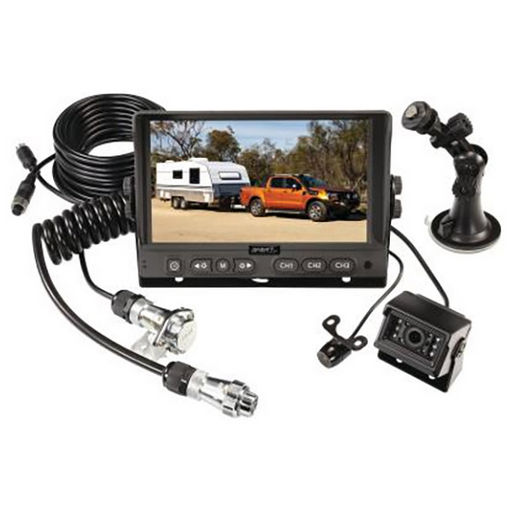
Mounting Techniques
Selecting the right spot on your vehicle for the camera installation is crucial for optimal functionality and safety. You’ll want a location that offers a clear view of what’s behind you without obstructions. Typically, the best spot is near the license plate or on the trunk lid.
Once you’ve chosen the location, clean the area thoroughly to ensure a secure attachment. Most cameras come with a mounting bracket or adhesive pad. If it’s a bracket, you’ll likely need to drill holes and use screws to secure it. Be careful not to damage any internal wiring or components.
For adhesive mounts, apply the pad firmly and wait the recommended time before attaching the camera. This ensures it adheres strongly, reducing the risk of it coming loose while you’re driving.
Maintenance Tips
Regularly clean your night vision backup camera’s lens to maintain optimal visibility during nighttime driving. Dirt, dust, and other residues can accumulate on the lens, obscuring your view. Use a soft, clean cloth and a lens-cleaning solution to gently wipe the surface. Avoid harsh chemicals or abrasive tools that could scratch or damage the lens.
Check the camera’s housing for any signs of wear or damage. You’re looking for cracks or seals that may allow water to seep in. If you find any, it’s crucial to address these issues promptly to prevent further damage. Remember, moisture can wreak havoc on the electronic components inside.
Don’t forget about the camera’s wiring and connections. Ensure they’re secure and free of corrosion. Loose connections can lead to intermittent or loss of signal, while corroded terminals can interrupt the power supply to your camera, rendering it inoperative.
Technology Integration
In addition to basic maintenance, you’ll find that integrating your night vision backup camera with other in-vehicle systems can significantly enhance its functionality and your overall safety. Modern vehicles often come equipped with advanced driver-assistance systems (ADAS) such as parking sensors, collision warnings, and adaptive cruise control. Pairing your backup camera with these features creates a comprehensive safety network around your car.
For instance, when you’re reversing, your camera can provide a clear night vision image while parking sensors alert you to obstacles in your path. If your vehicle is also equipped with cross-traffic alert systems, you’ll be warned of approaching vehicles that you might not see, even with the camera’s assistance. This integration ensures you’re not just relying on one piece of technology but a robust suite that works in harmony to protect you and others.
Moreover, some systems allow for the camera’s feed to be displayed on your central console screen, merging the visual data with GPS navigation maps. You’ll get real-time visuals along with route guidance, offering you ease in maneuvering even in unfamiliar dark alleys or parking lots.
Accident Prevention Strategies
With your night vision backup camera in place, you’ll significantly reduce the risk of accidents during nighttime maneuvers. This innovative technology provides a clear view of what’s behind your vehicle, even in low-light conditions. But don’t just rely on the camera alone; integrate it with other accident prevention strategies for the best results.
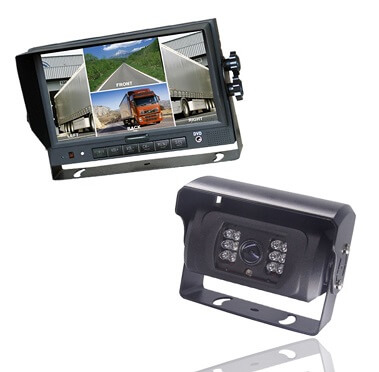
Firstly, always perform a quick walk-around check before getting into your vehicle. This helps you spot any obstacles or changes in the environment that your camera may not catch. Once you’re in the driver’s seat, adjust your mirrors properly to eliminate blind spots as much as possible.
Next, practice good situational awareness. Stay alert, and keep an eye on the camera’s display when reversing. Move slowly, giving yourself time to react to unexpected hazards. And remember, the camera’s view may be limited; it can’t detect everything, especially moving objects coming from the sides.
Finally, maintain your equipment. Keep the camera lens clean and check its functionality regularly. A dirty or malfunctioning camera won’t provide the safety benefits you’re counting on.
Choosing the Right Camera
As you’re selecting a night vision backup camera, it’s crucial to consider the camera’s resolution, field of view, and compatibility with your vehicle. Higher resolution means clearer images, which can make all the difference in low-light conditions. You’ll want a camera that offers at least 720p to ensure you’re not squinting at grainy footage when you need to back up at night.
The camera’s field of view is just as important. A wider angle gives you a more expansive view, helping to eliminate blind spots. Look for a camera with at least a 120-degree field of view to get a comprehensive look at what’s behind you.
Compatibility is key. Ensure the camera you’re eyeing up can integrate seamlessly with your car’s display or any additional monitors you plan to use. You don’t want to deal with the hassle of returns or makeshift setups.
Lastly, consider the camera’s build quality and weatherproof rating. It should withstand the elements, which is critical for consistent performance. Don’t skimp on quality for price—you’re investing in your safety, after all. With these factors in mind, you’ll be better equipped to pick a night vision backup camera that enhances your driving experience and keeps you safe.
Frequently Asked Questions
How Does Extreme Weather Affect the Performance of Night Vision Backup Cameras?
Extreme weather can reduce your night vision backup camera’s clarity, making it harder to see obstacles in low visibility conditions like fog, rain, or snow, which can affect its overall performance.
Can Night Vision Backup Cameras Be Integrated With Dashcam Systems for Synchronized Recording?
Yes, you can integrate night vision backup cameras with dashcam systems to record in sync. It’s a seamless way to enhance your vehicle’s recording capabilities for both front and rear views.
Are There Privacy Concerns Related to the Use of Night Vision Backup Cameras in Residential Areas or Public Spaces?
You might worry about privacy with night vision backup cameras, but they’re generally legal in public spaces as long as they don’t record people in private settings without consent.
How Do Night Vision Backup Cameras Impact the Car’s Battery Life and Overall Electrical System?
Night vision backup cameras typically have minimal impact on your car’s battery life and electrical system, as they’re designed to be energy-efficient and only operate when you’re reversing your vehicle.
What Are the Legal Implications of Installing a Night Vision Backup Camera on a Vehicle With Regards to Insurance and Traffic Laws?
You’ll need to check your local traffic laws and insurance policy for any impact a night vision backup camera might have, as regulations and coverage can vary by location and provider.
Conclusion
You’ve learned the ins and outs of night vision backup cameras, from their pivotal role in safety to easy installation tips. Now you can pick the right camera with confidence, maintain it effortlessly, and integrate it with other tech. Embrace these accident prevention strategies and enjoy the peace of mind that comes with enhanced visibility. Drive safer in the dark, knowing you’ve got the best tools to protect yourself and others on the road.
Related Articles
Be sure to also check out these articles right here at Motion Performance Motorsports
The Complete Buyers Guide for Backup Cameras
Next Backup Camera Article: Understanding Backup Camera: Field of View Explained
Previous backup Camera Article: Why Choose Weatherproof Backup Cameras for Your Vehicle?

Hey there, I’m Terra Frank, the driving force behind Motion Performance Motor Sports. I’m thrilled to have you here, exploring the fascinating world of cars, trucks, and everything related to automotive performance and accessories.

